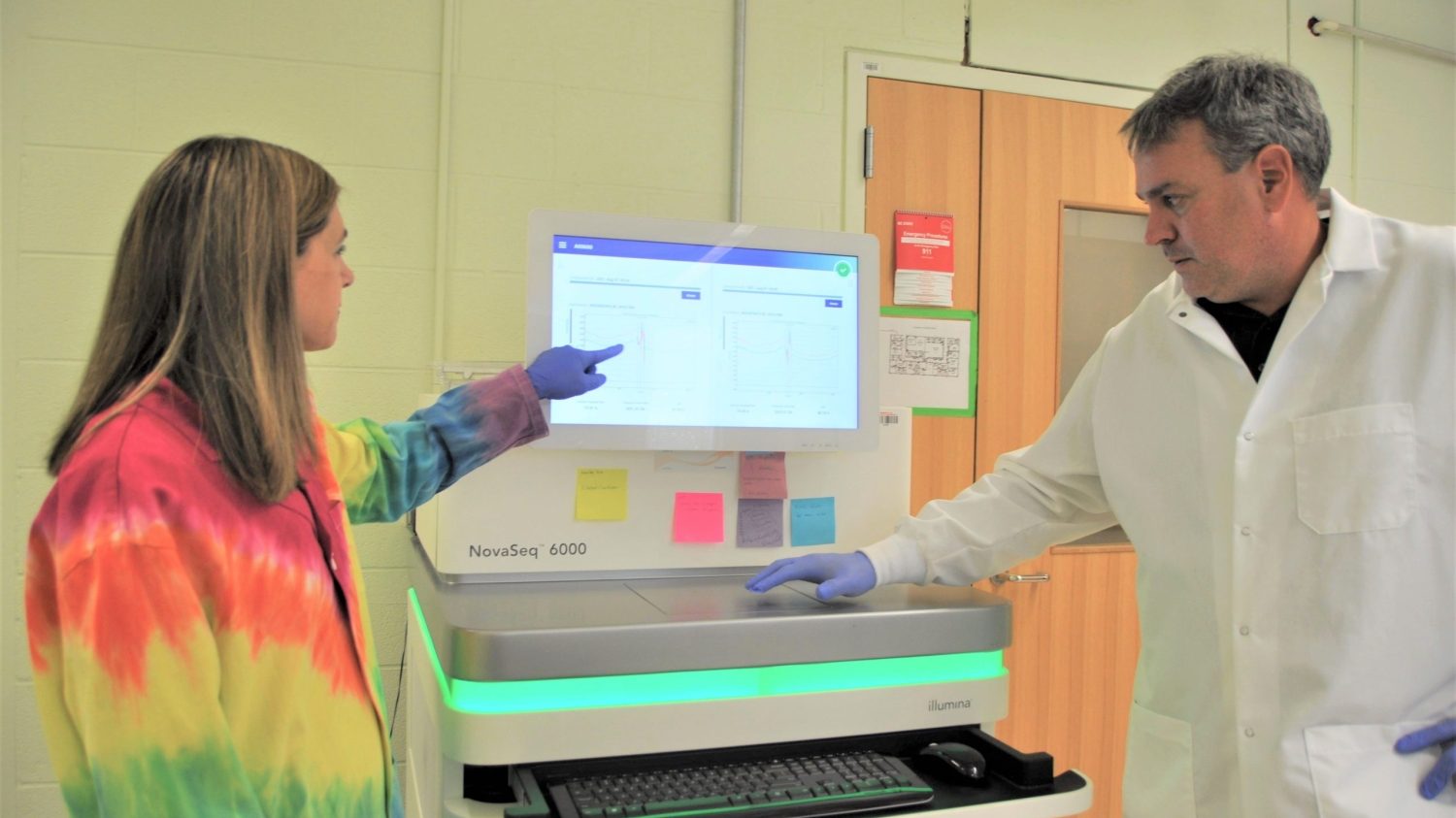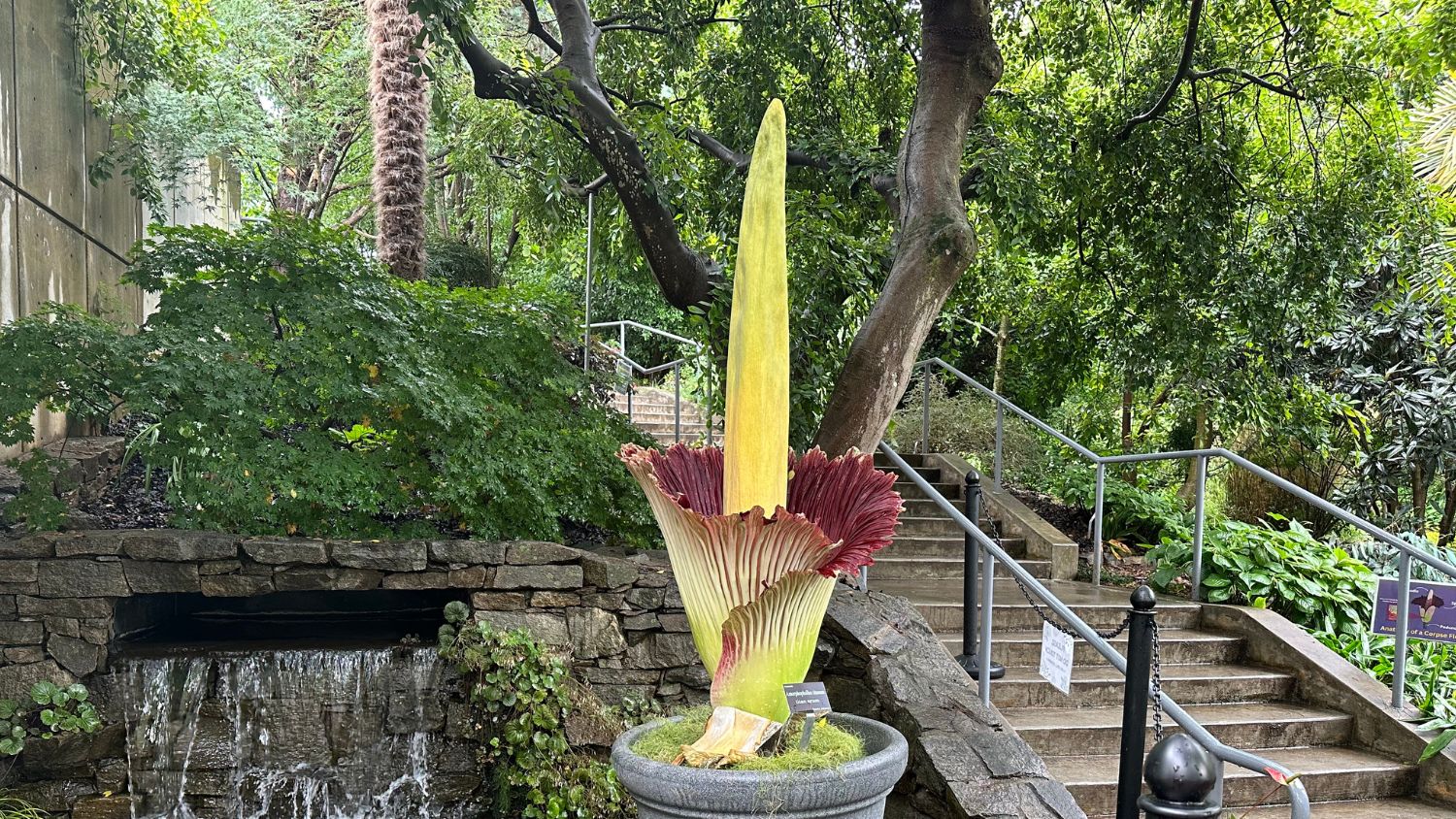The Genomic Sciences Laboratory (GSL), headquartered in Thomas Hall, has been a focal point for research advancement in genomics. On any given day, GSL Director David Baltzegar and his staff are testing the boundaries of research for more than 150 labs on campus and throughout the world.
But in early 2022, the global plant science community will have a new focal point for genetics and genomics research when Baltzegar opens a satellite GSL facility in the NC State University Plant Sciences Building.
The new core facility will include new equipment and unique services to serve the N.C. Plant Sciences Initiative (N.C. PSI), which will harness the knowledge and expertise of more than 50 NC State researchers working to solve some of the world’s biggest agricultural challenges through interdisciplinary, team-based science.
“This new facility syncs well with the World Health Organization’s 2050 initiative to double food production in order to sustain the world’s fast-growing population,” Baltzegar said. Genetic improvement is very important in that process.”
Among the new equipment offered at the satellite facility will be the LGC Oktopure, a DNA isolation robot designed for genotyping applications with plant tissues. It can process around 800 DNA tissue samples each day at full speed. Baltzegar says the new high-throughput genotyping service will be mainly used to help plant breeders get DNA marker information from their previous years’ trials in order to make timely decisions for their breeding programs.
“High throughput instruments like this will be a key component of this new genotyping facility – and a game changer for NC State’s genomics work,” Baltzegar said. “It puts us where we should be in terms of capacity and allows us to work at a scale that’s truly competitive with other world class research programs in agriculture and plant breeding.”
The satellite GSL lab will also offer services tailored to phytobiome research, which often involves studying the interactions between plants and microbes. A special genotype sequencing protocol called OmeSeq, which was developed at NC State, will be a showcase technology of the new facility, allowing researchers to identify not only the genotypes of the plant but also may provide genetic information for the microbes associated with each plant genotype.
“OmeSeq is a unique genomic sequencing approach where useful genetic information can be obtained for hundreds or thousands of experimental crop samples at greatly reduced costs when compared to other next-generation sequencing approaches,” Baltzegar said. “Because microbes and fungi are present in the plant material being extracted for DNA, additional genetic information is collected as a bonus, allowing for studies of how the host plant’s unique genotype might impact the diversity of microbes and fungi living with it. It’s a great added bonus for researchers using the facility.”
“We are proud of developing this new OmeSeq technology, which we hope will drive many advanced research projects in the future,” Baltzegar said.
While the new satellite facility in the NC State Plant Sciences Building will be tailored to meet the research needs of plant breeders and researchers in the microbiome space, Baltzegar expects more involvement from researchers in other disciplines.
“The funny thing about DNA sequencing is that there’s always some new application you never thought possible,” said Baltzegar. “We’ve gotten a lot more involvement from faculty in the College of Engineering who are branching out in this space, particularly those doing civil and environmental construction. DNA analysis is becoming more and more common, and impacting disciplines one might have never thought it would.”
Baltzegar believes the Plant Sciences Building’s technological infrastructure and capacity will also ensure that his new satellite facility can seamlessly carry out its full range of capabilities.
“The new Plant Sciences Building will have some of the most advanced hardwiring on campus in terms of internet speeds and bandwidth, and there will be a lot of advanced computing resources to support us in these efforts. We’re excited to be at the ground floor with these new technologies!”
Baltzegar says that efforts like downstream bioinformatic analysis will produce a lot of raw data that will need to be analyzed, and the need for advanced data management, infrastructure, and analysis will become greater and greater as new technologies come online.
“For example, GSL’s newest sequencer can sequence the equivalent of 2,000 human genomes, or 6 trillion base pairs of DNA, in a single three-day instrument run. It will stay in our main facility, but a lot of PSI researchers will use it, and OmeSeq libraries will be stored in the Plant Sciences Building.”
This post was originally published in College of Agriculture and Life Sciences News.
- Categories:



